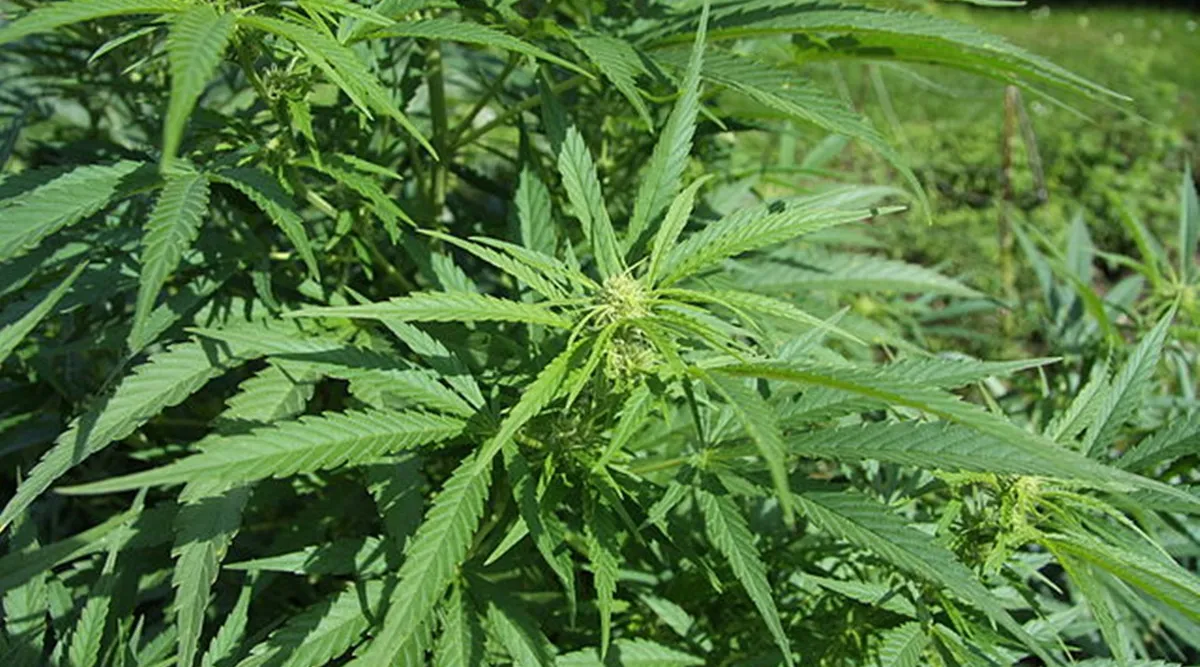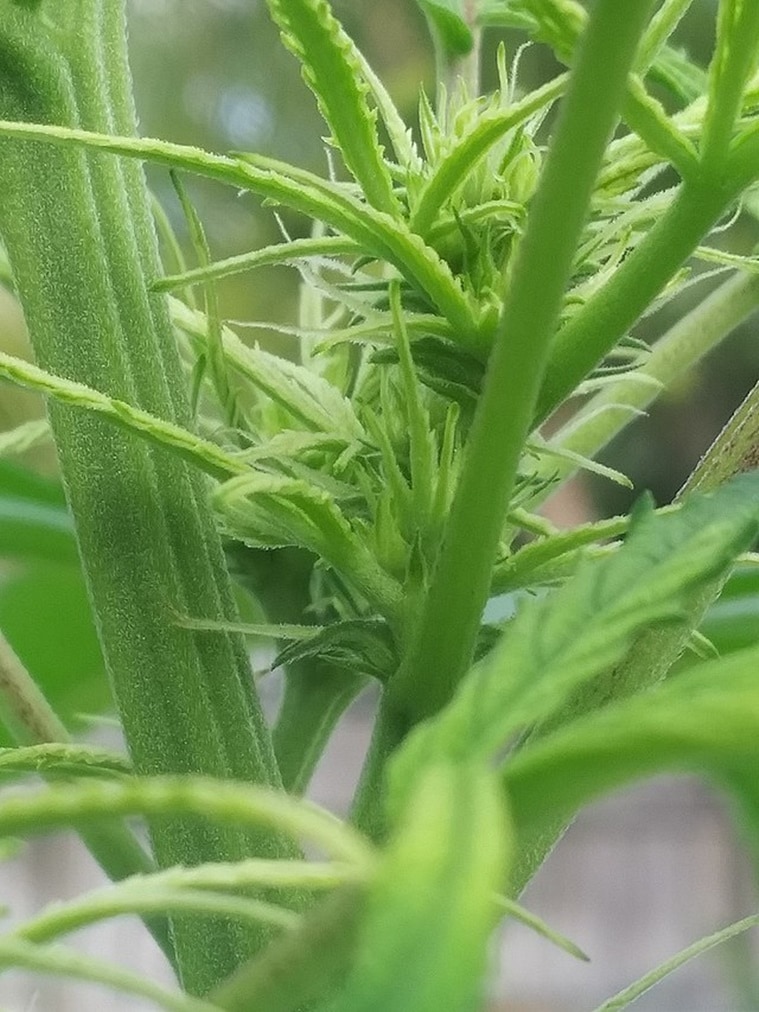 Hemp has various uses. (Source: Wikimedia Commons)
Hemp has various uses. (Source: Wikimedia Commons) In the recent years, led by the push towards plant-based and sustainable industries, hemp-based products have shown exponential growth, potential and demand. So much so that, according to expert estimates, India is one of the world’s largest and untapped medical cannabis markets today.
But, considering the fact that cannabis is often associated with drugs and illegal consumption, industries across India are working towards creating more awareness on the various benefits of hemp and its by-products that can be used for industrial and medical purposes.
What is hemp?
Hemp is a plant that is from the same species as cannabis. But unlike cannabis, hemp contains very low levels of tetrahydrocannabinol (THC), less than 0.3 per cent, while cannabis or marijuana contains 20 per cent or more. Rather than as a drug for intoxication or recreational purposes, hemp has medicinal, nutritional benefits, industry experts say. In India, however, the lack of regulation and question over its legality act as hindrances to its widespread use.
Notably, cannabis is considered a narcotic commodity under the NDPS Act (Narcotic Drugs and Psychotropic Substances Act, 1985). Under section, 10 (2) (d) of the NDPS Act, cannabis is to be delivered by the cultivators to the excise department of state governments. But in the absence of any provision in the NDPS Act, the states cannot resell the cannabis produce to private entities for extraction of cannabinoids or compounds used in medicines, as per experts.
“According to the NDPS Act 1985, the hemp leaves, seeds, and stalks are exempted. Only the flowers/ganja/charas or any derivative are prohibited for use. The Centre gives the power to the State to adopt its own cannabis policy for industrial or medical purposes,” said Rohit Kamath, co-founder and director, India Hemp Organics.
There are three types of cannabis — cannabis sativa, cannabis indica, and cannabis ruderalis (which is rare).
Recreational and medicinal cannabis comes from cannabis indica, while industrial hemp comes from cannabis sativa. Also, cannabis indica is low on fibre while cannabis sativa is high. For years, industrial hemp has been used for a variety of commercial purposes and has provided livelihood for people. It’s not that cannabis sativa has no THC, but levels are low, around 0.3 per cent. For any recreational or medicinal use, you need higher levels of THC, at least 2 per cent, closer to 20 per cent, noted Bibek Debroy, Chairman of the PM’s Economic Council in an opinion piece in 2016 on
What is the current status of hemp?
Recently, in a landmark move for industries dependent on hemp or industrial hemp, hemp and its by-products were included as food. Food regulator Food Safety and Standards Authority of India (FSSAI) finalised its draft regulations and decided to “regulate it as a food source”.
According to the Food Safety and Standards (Food Products Standards and Food Additives) Fifth Amendment Regulations, 2021 published in The Gazette of India: Extraordinary, Part III, Section 4, November 15, 2021, “hemp seed, hemp seed oil and hemp seed flour shall be sold as food or used as an ingredient in a food for sale”.
According to The Gazette regulations, “Hemp seed means the hulled, non-viable seeds obtained from cannabis sativa/other indigenous cannabis species. The cultivation of cannabis species for the purpose of hemp seeds in India shall comply with NDPS Act, 1985 and rules made thereunder.”
 Here’s a copy of the Gazette regulations (Source: Food Safety and Standards (Food Products Standards and Food Additives) Fifth Amendment Regulations, 2021.)
Here’s a copy of the Gazette regulations (Source: Food Safety and Standards (Food Products Standards and Food Additives) Fifth Amendment Regulations, 2021.) “This is a significant victory for the Indian hemp business. They can be sold in the same way as conventional food items now that FSSAI has included them in the food category,” Harshal Goel, founder, The Trost, a hemp-based company, told indianexpress.com.
BOHECO (Bombay Hemp Company) which sells nutrition and personal care products said in a statement on Instagram how it is a “big win” for the industry in India.
“After working on this agenda for over the last four years as the industry and knowledge partners, it gives us immense joy to see this come through. It adds so much credibility to the plant and the industry at large. This will now pave the way forward for not just an organised hemp food and nutrition industry but also gives an added push to develop a robust supply chain in the country. It’s really great to see the misunderstood plant in a positive light, and we’re very happy to be a small part of this big win,” Delzaad Deolaliwala, CLO, BOHECO told indianexpress.com.
View this post on Instagram
What is hemp used for?
Hemp is used to making cloth, cosmetics, rope, printer’s ink, wood preservative, detergents, soaps, and lighting oil. Even the seeds are used to produce a variety of food products. The seeds are rich in protein, fibre, and fatty acids including omega 3s and omega 6s, as per WebMD. It is said that they have antioxidant effects and may reduce symptoms of numerous ailments, improving the health of the heart, skin, and joints.
Tanvi S Chiplunkar, senior dietician at Bhatia Hospital Mumbai explained, “Hemp seeds or oil contain an amino acid known as arginine which is extremely good for your heart as it dilates and relaxes your blood vessels. Hemp oil fights inflammation, lowers blood pressure, and hence helps to prevent the formation of blood clots. Hemp seeds are a good source of gamma-linolenic acid (GLA), which is known for its strong anti-inflammatory properties. Foods rich in GLA are extensively used to fight inflammation in the joints (arthritis), nerve damage, and inflamed skin conditions such as acne, and eczema.”
 Hemp is grown in less water. (Source: Wikimedia Commons)
Hemp is grown in less water. (Source: Wikimedia Commons) Hemp’s use as a consumable food
According to Chiplunkar, hemp seed has commonly been claimed as one of the most nutritionally complete food sources due to its high nutritive traits. It can be consumed as such (whole, hulled seed) or dehulled (hempseed kernel), as well as its processing products, including oil, flour, and protein powder. “It contains 25–35 per cent lipids with a unique and perfectly balanced fatty acids (FAs) composition; 20–25 per cent proteins easy to digest and rich in essential amino acids; 20–30 per cent carbohydrates, a great part of which are constituted in dietary fibre,” said Chiplunkar.
Hemp seeds can be a part of a number of dishes and help increase a person’s protein intake, in a natural and sustainable form, mentioned Goel. As per him, hemp can be “consumed by anyone, like other conventional food items”.
*Hemp hearts – They are dehulled Cannabis Sativa seeds. Hemp hearts help increase protein intake.
*Hemp seed oil – Hemp seed oil is 100 per cent extracted from the Cannabis seeds (cold-pressed). Hemp seed can also be consumed as a food supplement. “It is considered to be a good source of carbohydrates (20–30 per cent), dietary fibre (10–15 per cent; about 20 per cent of the fibre is digestible), and minerals (four-six per cent). In addition, it has been suggested that other components, including trace amounts of terpenes and cannabinoids, have health benefits,” Goel told indianexpress.com.
*Hemp powder – Hemp powder is our solution to plant-based protein, with just a serving of 30g containing over 15g protein.
Hemp’s medical use
While hemp has been a constant in Indian culture, it may only be used in exceptional cases, as per ayurvedic practitioner Dr Dixa Bhavsar.
“I personally don’t use it in my practice. Ayurveda has three-four formulations that contain hemp but it’s used only in exceptional cases. It is addictive in nature and I do not recommend using it in food or on an everyday basis especially for normal/ healthy individuals,” Dr Bhavsar told indianexpress.com.
Hemp’s sustainability
In 2016, Uttarakhand became the first Indian state to permit large-scale commercial cultivation of industrial hemp. The licence was awarded to the Indian Industrial Hemp Association (IIHA) to plant cannabis on 1,000 hectares. Notably, the plant can be harvested during three months and requires very little water, which is why in states like Uttarakhand, where water is scarce, and it is difficult to grow conventional crops, hemp has been considered to be a sustainable alternative.
📣 For more lifestyle news, follow us on Instagram | Twitter | Facebook and don’t miss out on the latest updates!
- The Indian Express website has been rated GREEN for its credibility and trustworthiness by Newsguard, a global service that rates news sources for their journalistic standards.

